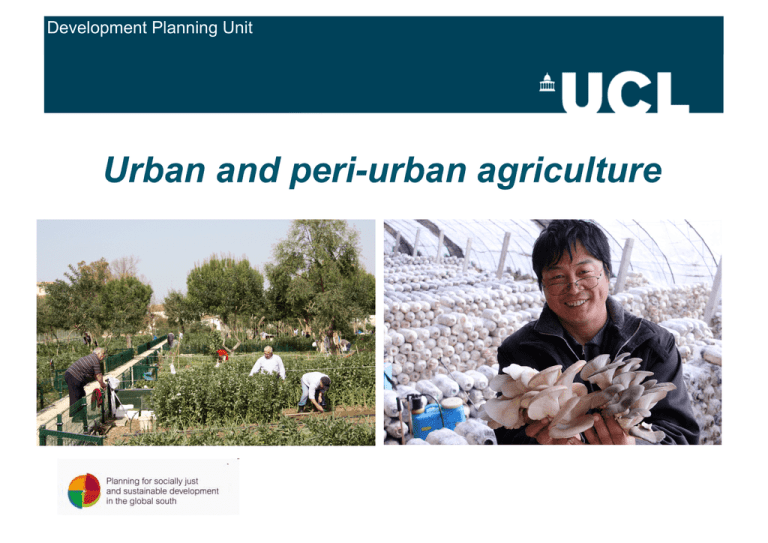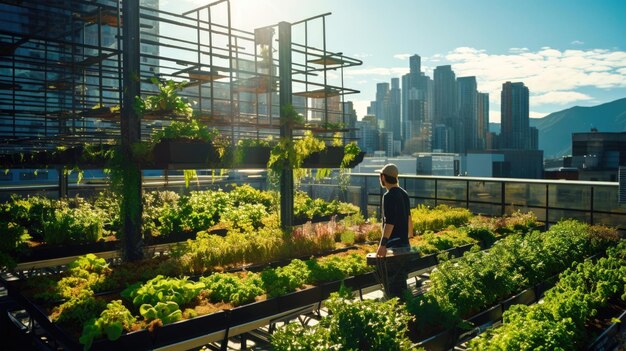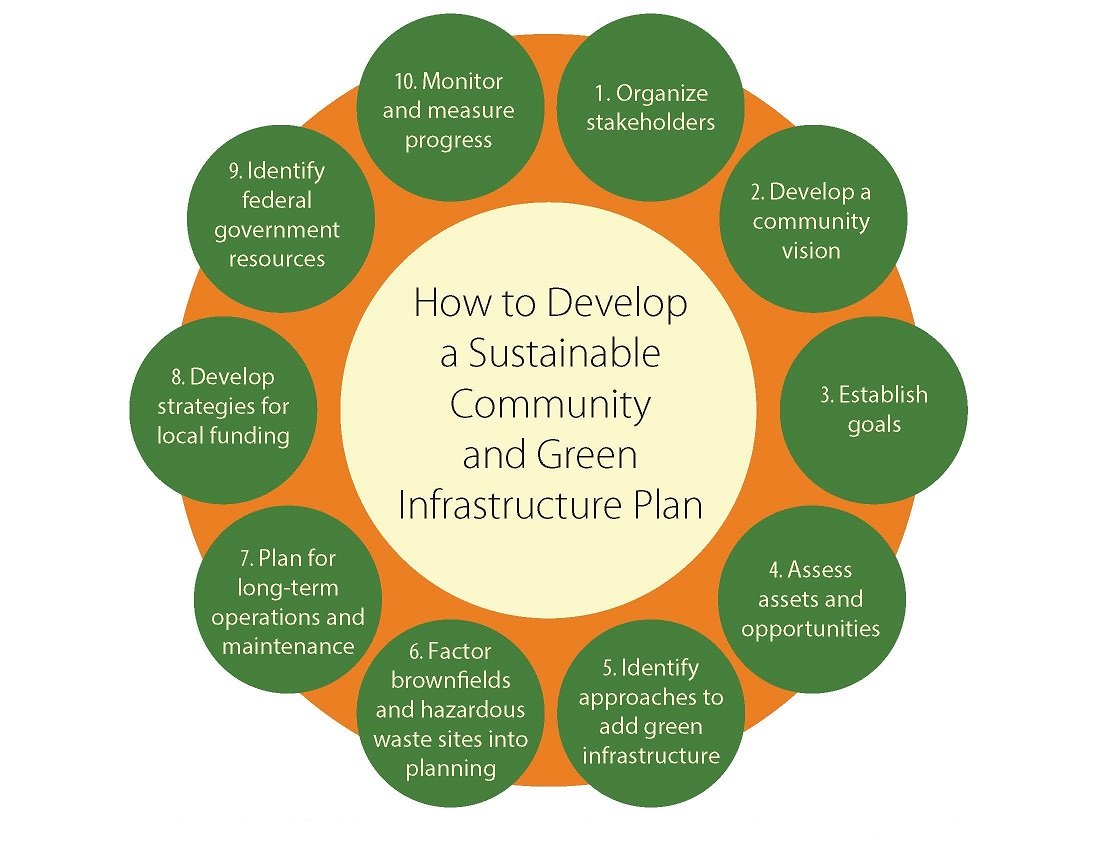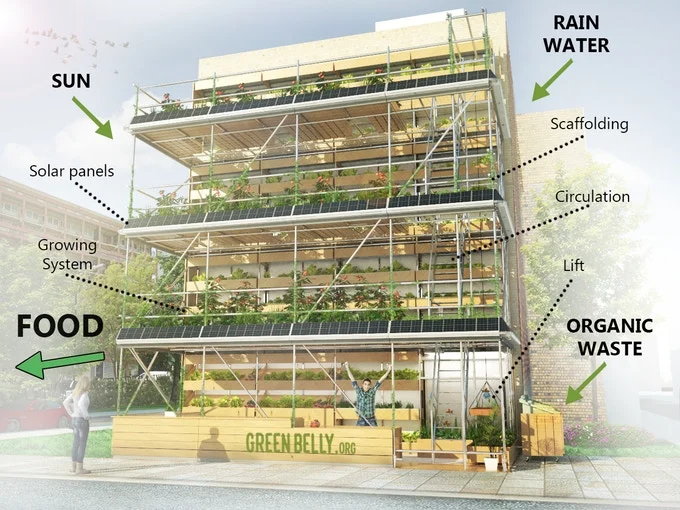
The Seeds of Change: Understanding Urban Agriculture
Urban agriculture, at its heart, is about bringing the farm to the city. It’s the practice of growing food and raising animals in urban environments, whether that’s on rooftops, in community gardens, or even in individual backyards. This isn’t just a trendy movement; it’s a fundamental shift in how we think about food production, consumption, and the very fabric of our cities. It’s a response to the growing need for sustainable food systems, increased food security, and healthier, more resilient communities. The rise of urban agriculture is a testament to the power of grassroots movements and the growing awareness of the environmental and social benefits it offers.
The Growing Importance of Urban Farming
In a world grappling with climate change, resource depletion, and a burgeoning global population, urban agriculture offers a beacon of hope. It’s a practical and accessible way to address a multitude of challenges. Consider the following:
- Food Security: Urban farms increase access to fresh, nutritious food, especially in underserved communities often called food deserts.
- Environmental Sustainability: Local food production reduces transportation emissions, minimizes the need for pesticides and herbicides, and can promote biodiversity.
- Community Building: Urban farms foster social connections, provide educational opportunities, and create a sense of place.
- Economic Development: They can generate jobs, stimulate local economies, and provide opportunities for entrepreneurship.
- Health and Well-being: Access to fresh produce and the physical activity associated with farming contribute to improved health outcomes.
The significance of urban agriculture extends beyond mere food production. It’s about creating more livable, sustainable, and equitable cities for everyone.
The Need for Policy: Why Urban Agriculture Needs Support
While urban agriculture offers immense potential, its success is often hampered by a lack of supportive policies. Without clear guidelines, regulations, and incentives, urban farmers face a myriad of challenges, including:
- Land Access: Securing land in urban areas is often difficult and expensive.
- Zoning Regulations: Existing zoning laws may not allow for agricultural activities.
- Permitting Processes: Complex and time-consuming permitting processes can be a barrier to entry.
- Water Rights: Access to water for irrigation can be problematic.
- Funding and Resources: Urban farmers often lack access to financial assistance, technical expertise, and other resources.
Effective urban agriculture policy development is essential to address these challenges and create a supportive environment for urban farmers to thrive. Policies can help to:
- Streamline Regulations: Simplify zoning laws and permitting processes.
- Facilitate Land Access: Identify and allocate land for urban agriculture.
- Provide Financial Incentives: Offer grants, loans, and tax breaks.
- Promote Education and Training: Support educational programs and workshops.
- Foster Collaboration: Encourage partnerships between government agencies, community organizations, and urban farmers.
In essence, policy acts as the fertile ground in which urban agriculture can flourish. It provides the framework, resources, and support necessary for urban farms to become integral parts of our communities.
Crafting Effective Urban Agriculture Policies: A Step-by-Step Guide
Developing effective urban agriculture policies is a complex process that requires careful planning, stakeholder engagement, and a commitment to long-term sustainability. Here’s a step-by-step guide to help you navigate the process:
1. Assess the Current Landscape
Before drafting any policies, it’s crucial to understand the existing conditions in your city or region. This involves:
- Conducting a Needs Assessment: Identify the specific challenges and opportunities for urban agriculture in your area. What are the biggest barriers to entry? What resources are lacking? What are the existing success stories?
- Mapping Existing Urban Agriculture Activities: Identify existing farms, gardens, and other agricultural initiatives. This will help you understand the current landscape and identify areas where policy interventions are most needed.
- Reviewing Existing Regulations: Analyze existing zoning laws, building codes, and other regulations that may impact urban agriculture. Identify any potential conflicts or barriers.
- Engaging Stakeholders: Talk to urban farmers, community organizations, local businesses, and other stakeholders to gather their perspectives and insights.
A thorough assessment provides the foundation for informed policy development.
2. Define Goals and Objectives
What do you want to achieve with your urban agriculture policies? Clear goals and objectives provide direction and help you measure the success of your initiatives. Consider the following:
- Food Security: Increase access to fresh, healthy food for all residents, especially those in underserved communities.
- Environmental Sustainability: Reduce the environmental impact of food production and consumption.
- Economic Development: Create jobs, stimulate local economies, and support entrepreneurship.
- Community Building: Foster social connections, promote education, and create a sense of place.
- Public Health: Improve public health outcomes by increasing access to nutritious food and promoting physical activity.
Make sure your goals are specific, measurable, achievable, relevant, and time-bound (SMART).
3. Develop Policy Options
Based on your assessment and goals, develop a range of policy options to address the identified challenges and opportunities. Here are some examples:
- Zoning Regulations: Allow urban agriculture in all zoning districts or create specific agricultural zones.
- Land Access: Identify and allocate vacant or underutilized land for urban agriculture. Establish land trusts or community land banks to secure land for long-term agricultural use.
- Permitting Processes: Streamline permitting processes for urban farms and gardens.
- Financial Incentives: Offer grants, loans, tax breaks, and other financial assistance to urban farmers.
- Water Management: Provide access to water for irrigation. Implement water conservation programs.
- Education and Training: Support educational programs, workshops, and technical assistance for urban farmers.
- Composting and Waste Management: Encourage composting and other waste reduction practices.
- Food Safety: Establish food safety standards and guidelines for urban farms.
- Marketing and Distribution: Support the development of local food distribution networks, farmers markets, and community-supported agriculture (CSA) programs.
Consider the potential impacts of each policy option and weigh the benefits and drawbacks.
4. Engage Stakeholders
Involving stakeholders throughout the policy development process is crucial for ensuring that policies are relevant, effective, and supported by the community. This includes:
- Urban Farmers: The people who will be most directly impacted by the policies.
- Community Organizations: Groups that work on food security, environmental sustainability, and community development.
- Local Businesses: Businesses that can support urban agriculture, such as restaurants, grocery stores, and nurseries.
- Government Agencies: Representatives from planning departments, health departments, and other relevant agencies.
- Residents: The general public, who will benefit from the increased access to fresh food and the other benefits of urban agriculture.
Use a variety of methods to engage stakeholders, such as public meetings, workshops, online surveys, and focus groups.
5. Draft the Policies
Based on the feedback from stakeholders, draft the specific language of your policies. Be clear, concise, and easy to understand. Consider the following:
- Legal Framework: Ensure that your policies are consistent with existing laws and regulations.
- Enforcement Mechanisms: How will the policies be enforced? What are the penalties for non-compliance?
- Monitoring and Evaluation: How will the policies be monitored and evaluated to ensure that they are effective?
- Sunset Clauses: Consider including sunset clauses to review and revise the policies on a regular basis.
Seek legal review to ensure that the policies are legally sound.
6. Seek Approval
Submit the draft policies to the relevant government bodies for review and approval. This may involve:
- Public Hearings: Provide opportunities for the public to comment on the proposed policies.
- Voting: The policies will be voted on by the city council or other governing body.
- Amendments: Be prepared to make amendments based on feedback from the public and government officials.
Be prepared to advocate for your policies and answer any questions that may arise.
7. Implement and Monitor
Once the policies are approved, implement them and monitor their effectiveness. This involves:
- Outreach and Education: Inform the public about the new policies and how they can benefit from them.
- Technical Assistance: Provide technical assistance to urban farmers to help them comply with the policies.
- Data Collection: Collect data to track the impact of the policies, such as the number of new farms, the amount of food produced, and the economic benefits.
- Evaluation: Evaluate the policies on a regular basis to assess their effectiveness and identify areas for improvement.
Adapt and revise the policies as needed to ensure that they continue to meet the needs of the community.
Policy Tools and Strategies: A Deeper Dive
Developing effective urban agriculture policies requires a diverse toolkit of strategies and tools. Here’s a look at some of the most impactful approaches:
Zoning and Land Use Regulations
Zoning regulations play a critical role in shaping the landscape of urban agriculture. They determine where and how agricultural activities can take place. Key considerations include:
- Allowable Uses: Clearly define which agricultural activities are permitted (e.g., community gardens, rooftop farms, livestock).
- Density and Intensity: Establish regulations regarding the size and scale of agricultural operations.
- Setbacks and Buffers: Define setbacks from property lines and buffers to mitigate potential impacts on neighbors.
- Special Districts: Consider creating specific agricultural zones or districts to prioritize and support urban farming.
By thoughtfully incorporating urban agriculture into zoning codes, cities can create a more favorable environment for food production.
Land Access Strategies
Access to land is a major challenge for urban farmers. Innovative land access strategies can help to overcome this obstacle:
- Vacant Land Programs: Identify and allocate vacant or underutilized land for urban agriculture.
- Community Land Trusts (CLTs): Create CLTs to acquire and manage land for long-term agricultural use, ensuring affordability and preventing speculation.
- Urban Agriculture Easements: Protect land for agricultural purposes through easements.
- Incentives for Private Landowners: Offer tax breaks or other incentives to encourage private landowners to lease or donate land for urban farming.
These strategies help to secure land for urban agriculture, providing a foundation for sustainable food production.
Financial Incentives and Support
Financial support is essential for urban farmers to launch and sustain their operations. Policy options include:
- Grants and Loans: Provide grants and low-interest loans to support farm startups, infrastructure improvements, and operational expenses.
- Tax Incentives: Offer tax breaks to urban farmers and businesses that support urban agriculture.
- Technical Assistance: Fund programs that provide technical assistance, training, and mentorship to urban farmers.
- Cost-Sharing Programs: Share the costs of infrastructure improvements, such as irrigation systems and composting facilities.
These financial tools empower urban farmers to succeed.
Permitting and Regulatory Reform
Streamlining permitting processes can reduce bureaucratic burdens and make it easier for urban farmers to operate. Key strategies include:
- Simplified Permitting: Create a simplified permitting process specifically for urban agricultural activities.
- One-Stop Shops: Establish a central point of contact for urban farmers to access information and assistance.
- Reduced Fees: Waive or reduce permit fees for urban agriculture operations.
- Exemptions: Consider exempting certain small-scale urban agriculture activities from permitting requirements.
These reforms help to create a more business-friendly environment for urban agriculture.
Education, Training, and Outreach
Providing education and training is essential for building a skilled workforce and increasing public awareness. Policy options include:
- Educational Programs: Support educational programs and workshops on topics such as urban farming techniques, business planning, and food safety.
- Apprenticeships and Internships: Create apprenticeship and internship programs to provide hands-on training.
- Community Outreach: Conduct outreach campaigns to educate the public about the benefits of urban agriculture and promote participation.
- Resource Centers: Establish resource centers that provide information, technical assistance, and access to tools and equipment.
These efforts build a strong foundation for urban agriculture.
Case Studies: Success Stories in Urban Agriculture Policy
Learning from successful urban agriculture initiatives around the world can provide valuable insights and inspiration. Here are a few examples:
New York City’s GreenThumb Program
New York City’s GreenThumb program is a prime example of effective urban agriculture policy. This city-run program:
- Provides access to land: It leases land to community gardens, ensuring long-term security.
- Offers technical assistance: It provides gardening workshops, training, and support.
- Supplies resources: It offers free materials like soil, compost, and tools.
- Fosters community: It strengthens community bonds through gardening and food production.
GreenThumb’s impact on New York City is significant, transforming vacant lots into thriving green spaces and promoting food security in underserved neighborhoods.
Detroit’s Urban Agriculture Ordinance
Detroit, a city facing significant economic challenges, has embraced urban agriculture as a key strategy for revitalization. Its ordinance:
- Supports diverse agricultural activities: It allows for a wide range of agricultural practices, from community gardens to livestock raising.
- Streamlines zoning regulations: It simplifies zoning rules for urban farms.
- Facilitates land access: It promotes the use of vacant land for agriculture.
- Encourages economic development: It supports the creation of jobs and local food businesses.
Detroit’s approach demonstrates how urban agriculture can contribute to economic recovery and community development.
San Francisco’s Urban Agriculture Incentive Zone Program
San Francisco’s program:
- Incentivizes private landowners: It offers tax breaks to landowners who allow their properties to be used for urban agriculture.
- Promotes land access: It helps to secure land for farming in a high-cost urban environment.
- Supports food production: It increases the amount of locally grown food.
- Encourages community involvement: It connects landowners with urban farming projects.
This innovative program shows how financial incentives can support urban agriculture.
These case studies demonstrate the diverse range of policy options and strategies that can be used to support urban agriculture. They highlight the importance of tailoring policies to the specific needs and context of each community.
Challenges and Considerations: Navigating the Complexities
Developing and implementing urban agriculture policies is not without its challenges. Understanding these complexities is crucial for ensuring success.
Balancing Competing Interests
Urban agriculture often involves balancing competing interests. For instance:
- Land Use Conflicts: Balancing agricultural activities with residential, commercial, and industrial uses.
- Environmental Concerns: Managing potential environmental impacts, such as noise, odor, and water usage.
- Community Concerns: Addressing concerns from neighbors regarding aesthetics, property values, and potential nuisances.
Effective policy development requires careful consideration of these competing interests and a commitment to finding solutions that benefit the entire community.
Addressing Food Safety and Health Concerns
Food safety is a critical consideration in urban agriculture. Policies should address:
- Food Safety Standards: Establishing standards for food handling, storage, and processing.
- Pest Management: Promoting environmentally friendly pest management practices.
- Water Quality: Ensuring the safety of irrigation water.
- Compliance and Enforcement: Implementing mechanisms to ensure compliance with food safety regulations.
Prioritizing food safety is essential for protecting public health.
Overcoming Regulatory Hurdles
Navigating complex regulations can be a major obstacle for urban farmers. Strategies include:
- Streamlining Permitting: Simplifying and expediting permitting processes.
- Clarifying Regulations: Providing clear and concise guidelines.
- Educating Farmers: Offering training and support to help farmers navigate regulations.
- Coordination: Establishing a central point of contact for urban farmers to access information and assistance.
Reducing regulatory burdens can create a more favorable environment for urban agriculture.
Securing Funding and Resources
Urban agriculture initiatives often struggle to secure adequate funding and resources. Strategies include:
- Grants and Loans: Seeking funding from government agencies, foundations, and other sources.
- Public-Private Partnerships: Collaborating with businesses and community organizations to leverage resources.
- Fundraising: Developing fundraising strategies to support urban agriculture projects.
- In-Kind Donations: Seeking donations of land, equipment, and other resources.
Securing adequate resources is crucial for the long-term sustainability of urban agriculture.
The Future of Food: Embracing Urban Agriculture
Urban agriculture is not just a passing trend; it’s a fundamental shift in how we think about food production and the future of our cities. As we move forward, it’s essential to:
- Embrace Innovation: Encourage experimentation with new technologies and approaches to urban agriculture.
- Promote Collaboration: Foster partnerships between government agencies, community organizations, and urban farmers.
- Invest in Research: Support research to better understand the benefits of urban agriculture and develop best practices.
- Advocate for Policy Change: Advocate for policies that support urban agriculture and create a more sustainable food system.
- Educate and Engage: Educate the public about the benefits of urban agriculture and encourage their participation.
The future of food is local, sustainable, and resilient. Urban agriculture is a key component of this future.
By embracing urban agriculture, we can create cities that are healthier, more equitable, and more sustainable for generations to come. It’s a movement that empowers communities, fosters environmental stewardship, and offers a pathway to a more secure and just food system for all. The seeds of change are already planted; now, it’s time to cultivate a brighter future.



